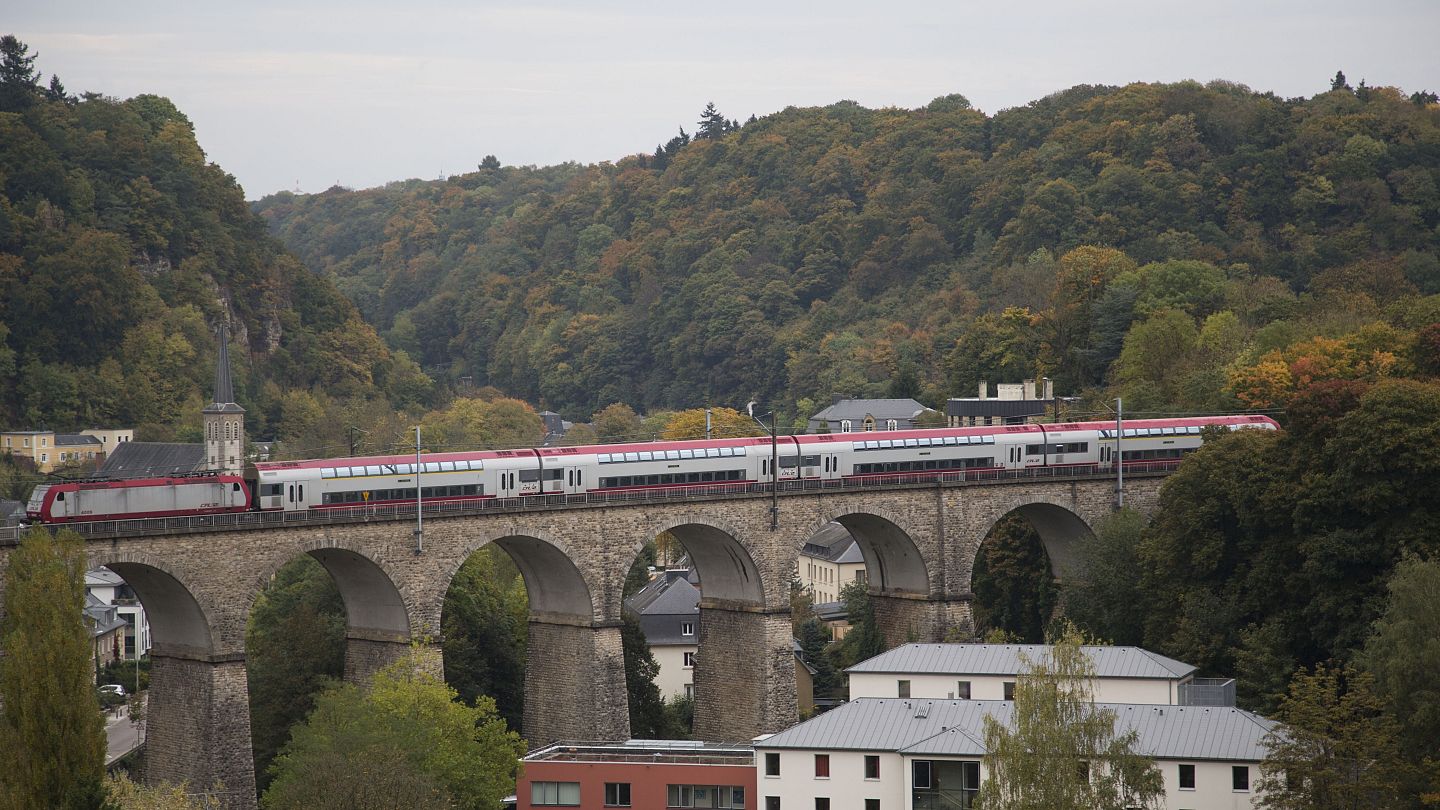Luxembourg, Europe’s richest country where public transport is free of charge
As countries try to increase the use of public transport, experts explain why free buses, trams and trains may not be a “magic bullet” to solve the problem.
Luxembourg has just celebrated three years of free public transport. And, according to its inhabitants, it has been a resounding success.
With multiple countries encouraging their citizens to ditch the car to reduce carbon emissions, could Luxembourg’s success be replicated across Europe?
“The quality of public transport has to change completely,” says François Bausch, Luxembourg’s Deputy Prime Minister, Minister of Mobility and Public Works and Minister of Defence.
“There is no magic wand. It is not a single mode of transport that will solve all our problems, but we have to be truly multimodal, we have to mix them.”
How has Luxembourg transformed its transport network?
Bausch explains that the country decided to make public transport free for two reasons: to give everyone fair access and to encourage debate and awareness around a decade of changes to its mobility system.
In 2013, when Bausch took office, rush-hour traffic jams were a daily occurrence in the centre of Luxembourg. Now there are no more, thanks to the increased use of the tram and the reorganisation of the way its streets work.
The tram has right of way and priority at junctions, so there are never any traffic jams. This, combined with the fact that it is free, encourages more people to use it. Bausch sees this as a measure of the success of Luxembourg’s transport transformation.
Cars have not completely disappeared and Luxembourg is still the country with the most cars per household in Europe. Some 230,000 people cross the Luxembourg border to work every day, and 75 % of these journeys are made by car.
“You don’t have to argue against something, you have to argue for something,” says Bausch. “I don’t make politics against the car, but for another system of mobility in which the car has its place.
Cheap, easy and accessible
Free public transport is not necessarily the solution either. It works in a rich country like Luxembourg, but for others, the aim should be to make it cheap, easy to use and accessible.
A recent Greenpeace report on public transport in Europe argues that reducing fares is one of the “easiest and quickest ways” to encourage people to use public transport. For it to work, the cost must be lower than the cost of a car.
The truth is that public transport in Luxembourg is not really free for most people. “Obviously it is paid for through general taxes, and since people who pay more taxes do not in fact have free access to transport, they pay indirectly through their taxes,” explains Bausch.
“But those who, for example, earn nothing or very little, are the ones who pay no tax, or very little direct tax. They really get it for free.
As for price reductions, the Greenpeace report highlights other possible sources of funding, such as shifting money away from fossil fuel subsidies, taxes on airline tickets or eliminating VAT on tickets.
Are there other ways to encourage public transport use?
Another important factor in getting people to stop using cars is how easy it is to navigate transport networks.
“You can make public transport free and then it can all go downhill very quickly because there is no infrastructure linked to it,” explains Herald Ruitjers, head of DG Move, the European Commission’s body responsible for transport in the European Union. “If there is no ticketing linked to it, no combination between the different services, or connectivity between them and you, then it’s useless.
If you want people to change their habits, you have to make sure that the alternative really works.
– François Bausch –
(Luxembourg Minister of Mobility and Public Works)
However, Luxembourg’s transformation has gone far beyond free transport, recalls Bausch. In recent years, the country has invested around 500 euros per citizen per year in modernising and extending the rail network, for example.
“We invest four, five, six times more in the quality of the rail network than all other European countries. And obviously we have also completely reformed the national bus system that we have”.
“If you want people to change their habits, you have to make sure that the alternative really works,” he adds.
Why public transport instead of the car?
Whether it’s free or not, the main goal is to get more people to use public transport. But why, if electric cars are the future?
“Public transport is much more efficient than individual transport,” explains Ruitjers. “Individual cars consume, for example, about seven times more electricity. I am talking about electric cars for the future compared to, for example, a train, a tram or a metro”.
According to him, this means that even in the future, when we have fully decarbonised, we will still have to rely on public transport for its capacity and energy efficiency.
“It’s about finding a balance between what we need to have a liveable planet and what we need to ensure that it is socially bearable for everyone,” concludes Ruitjers.
Watch the video above to learn more about how Europe can transform its public transport.

